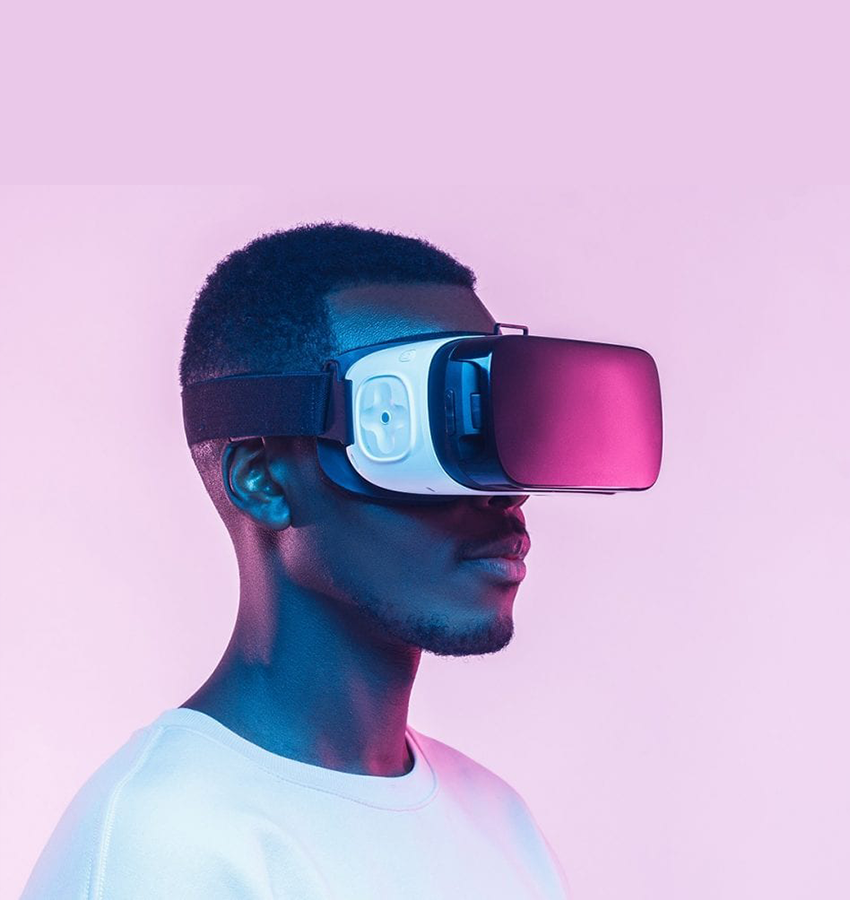
Virtual reality services are no more the material of science fiction. It’s here to stay, and it are gaining traction quickly. Lets see How Virtual Reality Technology is Changing the Face of Consumer-Brand Interaction. With a market size of more than USD 21 billion in 2021, virtual reality technology is growing steadily and is predicted to have a compound annual growth rate of 15% over 10 years (2022 to 2030). While virtual reality is not a new technology, its use, like that of other digital technologies, such as augmented reality, is expected to grow over time. According to PwC, by 2030, VR and AR might enhance global GDP by USD 1.5 trillion.
When compared to traditional methods of display advertising, VR advertising and marketing will provide consumers with more layers of engagement and a more personalized experience. The matrix used to track a user’s level of engagement will evolve, as will the KPIs. Furthermore, VR will not be limited to simply displaying advertisements but will go so far as to create customized experiences for users to interact with products and services.
Let’s look at how virtual reality will affect advertising.
Virtual reality product testing
Brands will be able to improve involvement in marketing with VR advertising. Unlike the internet, which allows users to interact with products through social media and applications, virtual reality headsets and controllers will allow consumers to interact with products by simulating interactions such as grabbing objects, walking through an art gallery, or simply experiencing a hotel room. This virtual experience will be 3D and immersive.
Increased conversions with interactive VR advertisements
Advertising is all about attracting, engaging, and ultimately turning a potential customer into a customer. The greater the level of engagement and contact, the greater the likelihood of conversion. When compared to traditional advertising outcomes, interactive VR advertisements will allow customers to engage at a deeper level with products and places, resulting in higher conversion rates.
Customer service and experience have been improved.
Virtual reality marketing and advertising offer superior experiences and have the potential to lower the obstacles that brands encounter when enticing users to adopt their products or services. VR is ideal for retail brands; for example, Samsung just launched its NYC flagship store virtually in the metaverse. It lets customers to interact with things at their original size and scale.
Virtual reality in mobile marketing applications
As marketers reach out to a younger audience, the concept of VR advertising via mobile marketing apps will become more common. Virtual reality advertising will enable marketers to increase engagement and impressions across all augmented reality-enabled social media platforms. Because of its disruptive character, this marketing and advertising technology will be around for a long time.
In-person encounters are an option
Events are an important aspect of promotion and marketing initiatives; however, post-Covid travel limitations impacted the events industry. Attendance at trade shows, expos, and launch events dropped dramatically. These are the locations where brands receive the most attention and engagement. VR technology has emerged as a viable solution for in-person interactions. Brands may now reach out to their customers for nearly half the price. It also portrays the brand as futuristic, environmentally sensitive, and technologically smart.
Advertisement within an app or game
Although there are no limitations to VR, in-app or in-game advertising will be the primary focal area for marketers to display their goods. However, augmented reality (AR) will surely broaden the field of advertising, as people will wear glasses to view a virtual overlay of the real world, and this experience will be immersive and, no doubt, more engaging for customers.
Product education for users
Consumers can use VR to not only try out items and services but also receive instructions on them. Real-life applications, including real-time feedback, can now be simulated by brands. This allows purchasers to see the products in operation and receive hands-on training on how to utilize them. It also eliminates the high costs that businesses face for demos and shipments.
Matrix of participation and immersion
VR advertising and marketing will be very different from traditional advertising. It will have a broader influence because developers and designers will have to work with new technologies to create inventive advertising tactics. New KPIs will be defined as more emphasis is placed on involvement and immersion in the experience. What heat maps capture about a user’s path on a website now. The VR advertising will collect about a user’s most engaged pinpoints. It might be as basic as measuring head movements and determining which aspects of the ad experience users prefer.
Opportunity for interactive video advertisements
VR advertising will greatly benefit the pharma, medical, and health industries. It will enable these companies to produce interactive video advertisements. That would reach consumers and industry stakeholders in a unique way. It will provide the benefit of more engagingly showing their technology advancement without incurring excessive costs on demo and in-person reach out.
Brands are excited about this new advertising and marketing format, but the trick is to use it in a unique, engaging, creative, and original way. Creators, advertisers, and marketers always look for new methods to engage and interact with consumers through VR advertising.
The unique applications of VR technology and its capacity to engage consumers on a deeper level than traditional advertising will provide advertisers with a good sense of the future. Few firms have already begun to use it effectively, making advertising and branding appear more realistic and engaging.
Advertisers should focus on making them more fascinating and blending in with the real environment. Its allowing consumers to modify and interact with the 3D space around them.



